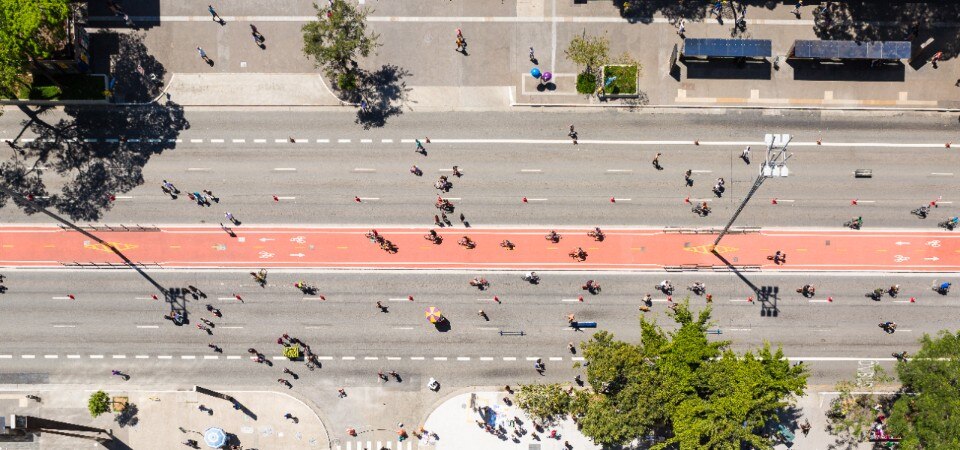If we all shifted from car to bike for just one day a week we would cut our carbon footprint by 3.2kg of CO2, the equivalent of eating a serving of lamb or sending 800 emails. These are the findings from new research on daily travel habits in seven European cities.
The study titled “The climate change effects of daily active travel in cities” found out that emissions from a bike trip are more than 30 times lower than driving a car. Even compared to electric cars, cycling cuts emissions by about ten times.
During the Covid-19 pandemic, active travel has offered a valid alternative to cars to maintain social distancing. In the UK, for example, cycling levels increased by 9% on weekdays and by 58% on weekends compared to pre-pandemic levels, according to a report by CREDS.
While helping people to stay safe, bikes have also contributed to reducing emissions in urban areas. In a YouGov survey spanning 21 European cities, 64% of respondents said they did not want to return to pre-Covid air pollution levels, and three-quarters were willing to have public spaces redesigned to achieve this.
So, governments across the world got busy accelerating existing plans or investing in new ones to encourage bike commuting, with European capitals leading the way. According to the European Cyclists’ Federation (ECF), the continent’s cities spent €1bn on Covid-related cycling measures in 2020, creating at least 1,000km of cycle lanes.
In Paris, some 50km of bike lanes were added in the past few months alone. The city’s transformation towards a cycling capital started a few years ago, since the election of Mayor Anne Hidalgo, but only last year bicycle use rose by 54% – the town hall's statistics say – following a considerable increase in new cycle lanes.
In Milan too, the Strade Aperte program launched last April favoured a 122% increase in cyclists thanks to over 40km of new protected cycle lanes throughout the city, while Berlin spent the early days of lockdown building over 20km of pop-up bike lanes.
The trend expanded outside Europe as well. In Bogotà, currently almost 7% of overall trips are by bike – more than any other Latin American city – since the capital introduced an impressive network of cycle lanes over the past few years. Asia is bringing the cycling experience to the next level, becoming home to innovations that make life easier for cyclists. China got equipped with elevated cycle paths, Japan is implementing robotised bike parks, and several Eastern metropolis are now using AI to optimise bike rental services.
What can be surely gathered from the data is that the pandemic revealed a latent demand for investing in cycling infrastructures, while concurrently offering a chance to build back better urban streets. As we have witnessed in the past year, and we will probably continue to, creating new bike lanes can really have an impact on behaviour, increasing the number of cyclists across entire cities, and therefore, improving health and cutting greenhouse emissions.


